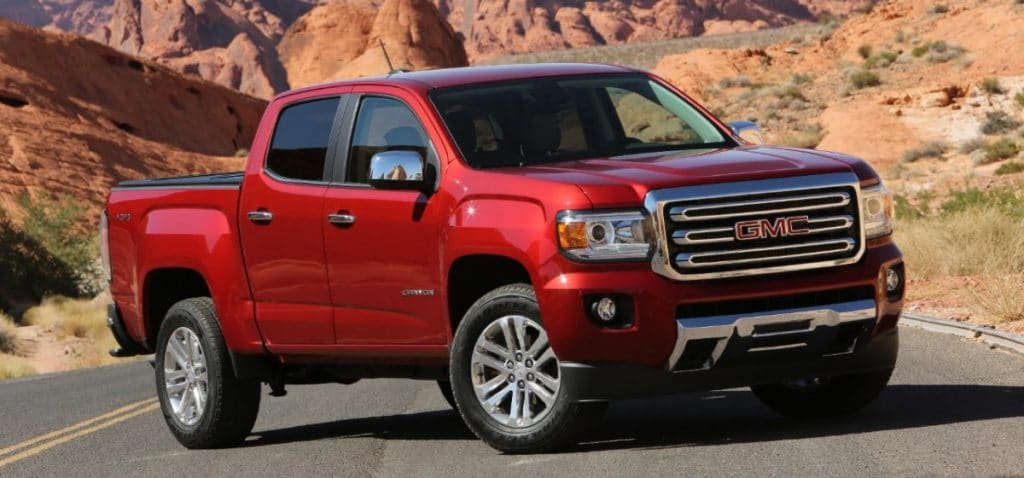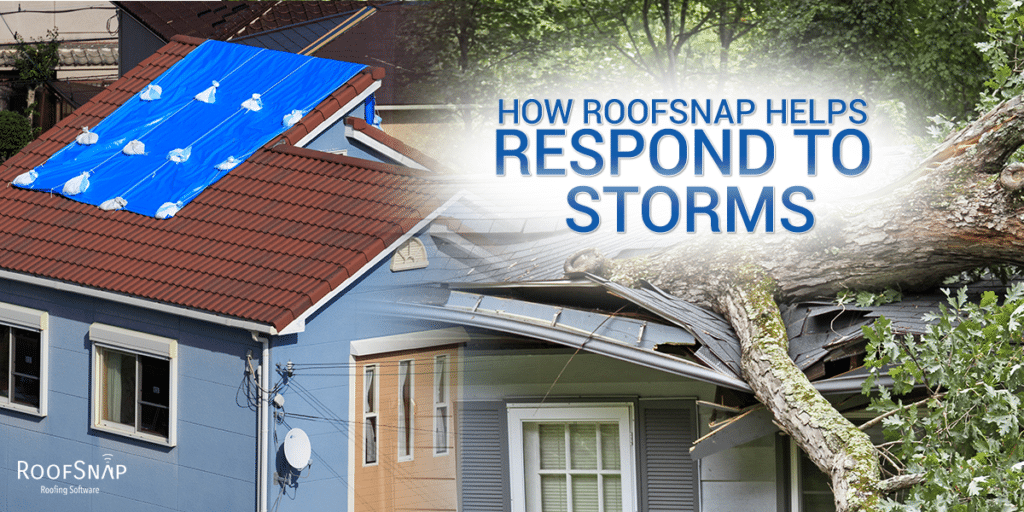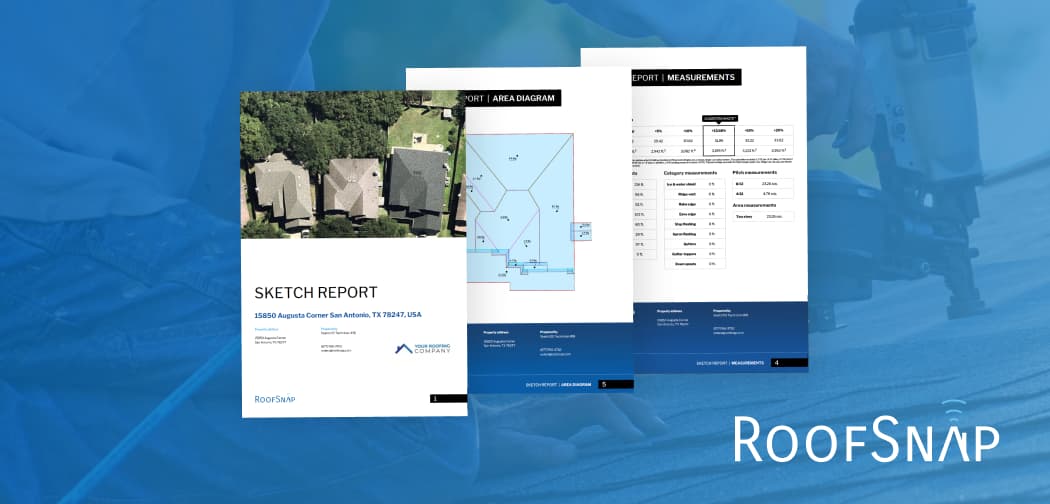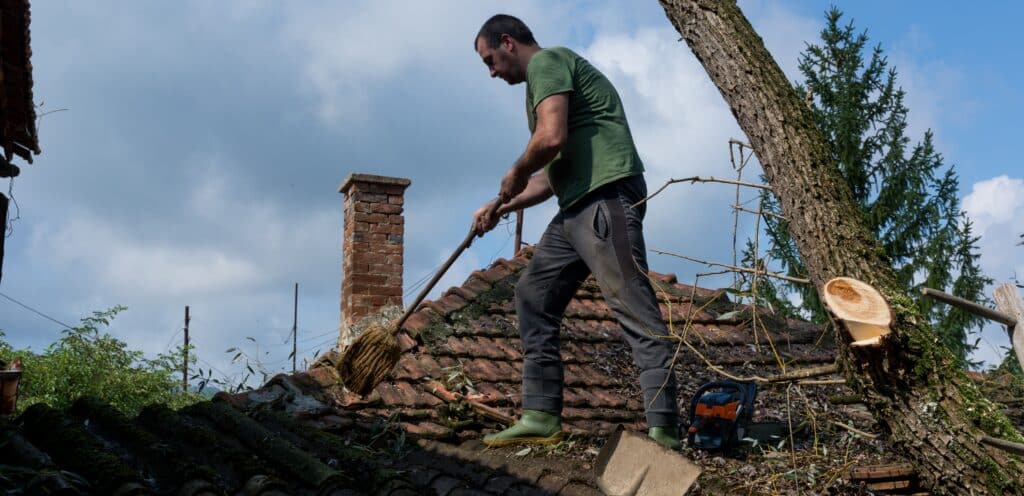
Weather can be unpredictable. But that doesn’t mean you can’t be prepared.
As a professional in the roofing industry, you must be aware of how different types of severe weather can affect roofing materials. You also need to know the best roofing material options for different extreme weather scenarios.
It’s true that nothing takes the place of routine inspections and maintenance, and you should encourage your customers to keep up with both in order to be as prepared as possible for inclement weather. But in times of natural disaster, your customers will look to you for your guidance and expertise during recovery.
This article offers best practices for roofing professionals and companies across various types of severe weather. So when Mother Nature strikes, you’ll be ready.
Extreme Heat Roofing
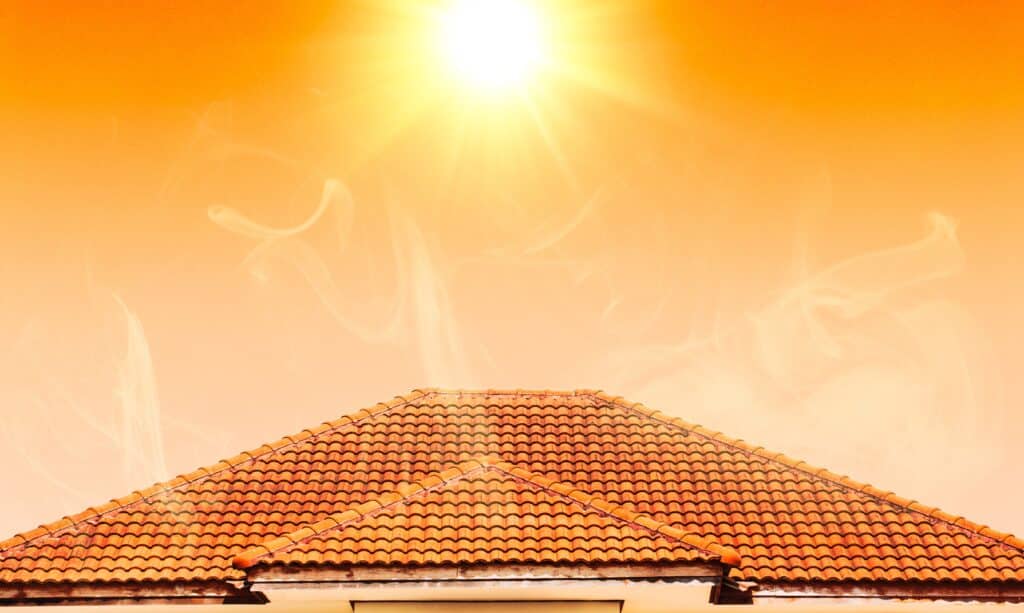
If it seems like summers are getting hotter, they are. As a roofer, you know that extreme heat can cause roofing materials to break down and deteriorate over time.
Your expertise can help your customers protect their roofs from the damaging effects of extreme heat.
Heat & Its Impact on Roofing Materials
Extreme heat can have multiple negative effects on roofing materials, including:
- Material breakdown: Intense heat can weaken the structural integrity of the roof, leading to cracks, warping, and other forms of damage.
- Thermal shock: Rapid temperature changes can cause the roof to expand and contract, leading to stress and potential damage.
- Color fading: Dark-colored roofs that are exposed to extreme heat can absorb high temperatures. This can lead to color fading and discoloration.
As a roofing professional, it’s essential that you are up to speed on the latest, most efficient options for different roofing scenarios.
One roofing option that addresses all the concerns attributed to extreme heat listed above is EPDM (Ethylene Propylene Diene Monomer) roofing. This is a type of synthetic rubber roofing membrane commonly used in commercial and residential flat or low-slope roofs.
EPDM roofing is known for its excellent durability and longevity. It can withstand extreme weather conditions, including UV radiation, high winds, and hail. In high summer heat, especially, it has the natural ability to expand and contract without breaking, splitting, or cracking.
EPDM roofing also has natural insulating properties, which can help reduce energy consumption by keeping the building cooler in hot weather and retaining heat in colder climates.
Cool Roofing Technology
Energy-efficient options are popping up for all kinds of technology, including roofs. Cool roof technology is made of materials that reflect heat and reduce heat absorption more than traditional roofing materials. While cool roof tech is in part a response to our warming planet, it also paves the way for lower energy costs.
Cool roofs can be made from using white or lighter-colored materials, metal, or applying a solar reflective coating.
The same cooling effects can be found with green roofs, as well. A green roof utilizes a plant layer on the rooftop to provide shade and lower the temperature of the roof’s surface.
While both cool roofs and green roofs are viable options for roofing materials to combat extreme heat, they have different costs and advantages. For example, green roofs are typically more expensive to install but generally have a longer lifespan.
For your customers, the choice between cool and green roofing will likely come down to budget and intent. But, whatever option your customers choose, they will thank you for reducing their HVAC costs.
As a roofer specializing in cool roof technology, you also have a unique opportunity to build lead referral programs with local HVAC and window/door companies that prioritize energy efficiency. This could offer a great way to build your customer base.
What Is the Best Roof Underlayment for Hot Weather?
What goes under your roofing material is just as important as what’s on top and visible. There are three types of roof underlayment layers you can choose from:
- Synthetic
- Rubberized asphalt
- Asphalt-saturated felt
Asphalt-saturated felt used to be the industry standard, but the synthetic and rubberized asphalt underlayment options offer better durability and protection, particularly in extreme temperatures.
While synthetic and rubberized asphalt underlayment layers are more expensive to install, they are well worth the cost to protect homes and buildings in hotter climates.
Storms & Hurricanes
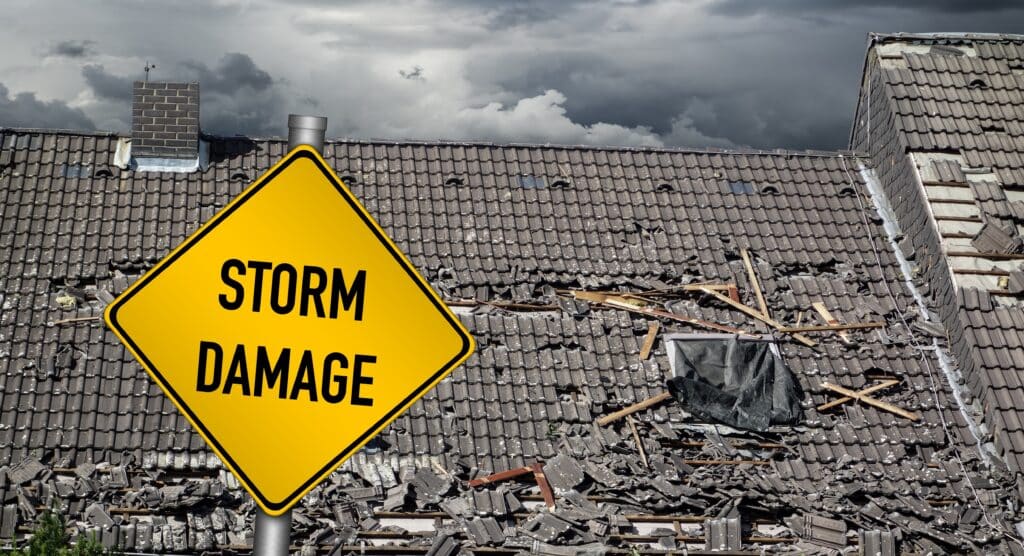
Storms and hurricanes can bring high winds, water damage, and a sudden influx of emergency roof repair needs. Luckily, there are things you can do for your customers in areas prone to more severe weather events to stormproof roofs and help reduce the impact of major storms.
Retrofit an Existing Roof
There are a variety of retrofitting options you can suggest to your customers to prepare their roofs for severe storms.
- Install impact-resistant shingles: These heavy-duty shingles are designed to withstand strong winds and flying debris. Some insurance companies even offer discounts on premiums for using these materials.
- Apply roofing cement and sealants: You can use roofing cement or sealants to reinforce the edges of roof shingles or tiles and prevent water infiltration.
- Reinforce the roof structure: Strengthen the roof-to-wall connections by adding hurricane straps or metal tie-downs. These metal straps help secure the roof to the walls and provide additional support during high winds.
- Add a secondary water barrier: Installing a secondary barrier will keep water out of the home if the roof is severely damaged by strong winds.
Upgrade to Metal Roofing
If your customer is building from the ground up or looking to replace their existing roof completely, metal roofing offers the best protection during hurricane season.
In the wake of 2022’s Hurricane Ian, many Florida residents made the switch to metal roofs. It’s an ever-increasingly popular choice for roofing materials in states that see lots of severe thunderstorms.
In addition to its durability in high winds, metal roofing is:
- Recyclable
- Long-lasting
- Reflective (so great for hot climates!)
Regular Maintenance
Encourage your customers to schedule regular maintenance checks. When you inspect a roof to ensure all components are in good condition, you can help fix issues before they become bigger problems. And this can give your customers peace of mind and save them money in the long run—whether the severe storms hit or not.
Hail
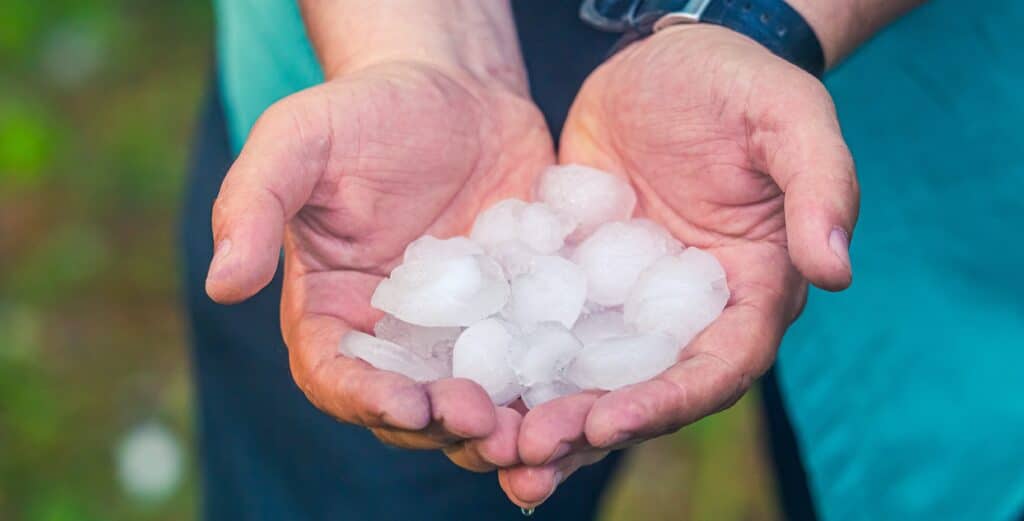
It’s no secret that hailstorms can wreak havoc on roofs. FEMA has reported that hail causes approximately $1.07 billion in property damage each year in the U.S.
If you live in an area where a hailstorm has occurred, chances are you’ll get calls to assess and repair damaged roofs. But you can also offer your customers proactive solutions to combat hail damage in the first place.
Consider materials that are specifically hail-resistant, such as metal roofing or impact-resistant shingles with a Class 4 impact rating.
Shingles are rated on their impact resistance, and the classification scale runs from Class 1 to Class 4 (the highest possible rating). New shingles are tested in a lab setting to determine how well they hold up under various impact levels. To achieve a Class 4 rating, a new shingle has to withstand the impact of a 2-inch ball dropped from 20 feet above.
You should also let your customers know that some insurance companies offer discounts on premiums for using impact-resistant roofing materials.
Extreme Cold & Snow
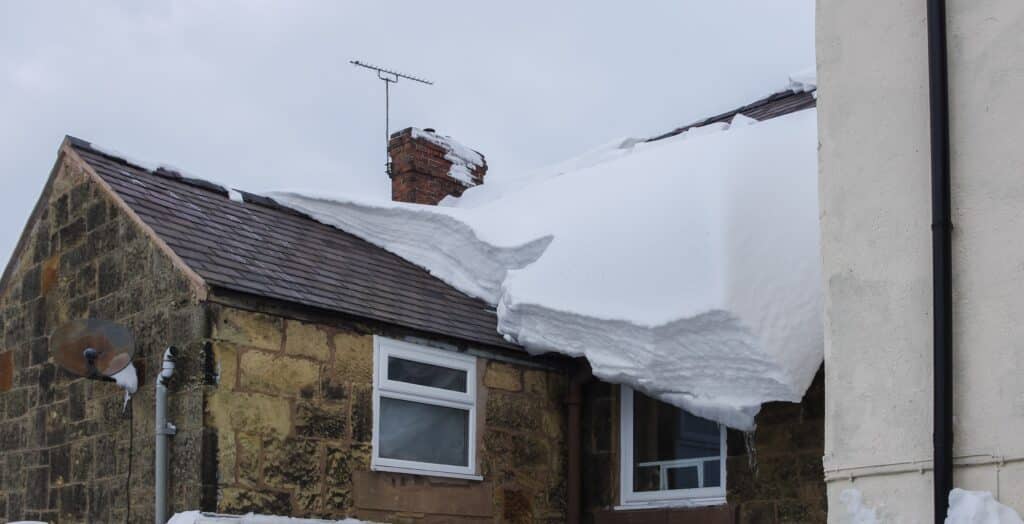
Much like extreme heat can have a negative effect on residential and commercial roofs, so too can extreme cold and snow. From ice dams to cracks and buckling to structural damage caused by excessive weight, there are a variety of ways cold and snow can cause major issues for your customers.
There are measures, however, that you can take to help prepare your customers’ roofs to handle winter.
- Conduct roof inspections: Encourage your customers to schedule thorough inspections of their roofs to identify any existing issues or potential vulnerabilities before the winter season begins. This includes checking for leaks, damaged shingles, flashing, and other areas needing attention.
- Repairs and maintenance: As needed, you can perform necessary repairs and maintenance tasks to ensure the roof is in optimal condition.
- Cleaning and debris removal: You can also offer a service to clean roofs and remove any debris, leaves, or branches that may have accumulated on roofs and in gutters. This helps prevent clogging of drains and gutters.
- Insulation and ventilation: Assess the insulation and ventilation of the roof to ensure it is properly equipped to handle the cold weather. Adequate insulation helps prevent heat loss and reduces the risk of ice dams forming on the roof.
And once winter arrives, you can provide snow removal services in areas with heavy snowfall. This will help your customers prevent excessive snow accumulation that can potentially lead to roof collapse.
This is also the best way to protect against ice dams, which occur when snow accumulation on the roof melts and then refreezes. This cycle can happen over a period of days. A roof can only handle so much weight before the snow load will cause damage, and perhaps even failure.
Encourage your customers to take care of preventative maintenance like keeping gutters and downspouts clear and removing snow from the roof as it accumulates. You can also offer your professional services to safely remove debris and snow throughout the winter season.
Tips for Roofing Materials in Extreme Cold
Certain roofing materials are hardier than others in cold climates. For example, slate, metal, and asphalt shingles are more apt to withstand freezing temps and extreme weather conditions than other materials (like EDPM—see below!).
Installing EPDM or Rubber Roofing in Cold Weather
EPDM, also known as rubber roofing, is a roofing material that can be affected by cold weather, making its installation more difficult. While EPDM can be installed in cold weather, certain conditions must be present and specific procedures need to be followed.
Mainly, the outside temperature needs to be slightly above freezing, so no less than 40 degrees Fahrenheit. This is necessary so that the adhesives used for EPDM roof application can bond properly.
You’ll also need to allow extra time—at least 30 minutes—for the EPDM membrane to relax before you begin the installation.
Finally, keep on top of weather conditions and take all the necessary safety precautions.
Can You Tar a Roof in Cold Weather?
The short answer is yes, you can tar a roof in cold weather. But there are some limitations and considerations.
The biggest limiting factor is: how cold is it? Generally, it’s not recommended to apply tar or roof coatings in below-freezing temperatures. The materials may not dry and seal properly, which can affect the effectiveness of the application.
There are a range of temperatures at which different roof coatings should be applied. Check out manufacturer guidelines and recs for the specific product you’re looking to use.
Working with Insurance Companies

It’s always a stressful time for property owners dealing with significant damage due to a severe weather event.
You can use your knowledge and expertise as a professional roofing contractor to help your customers navigate the insurance claim process and get their repairs approved and done as quickly and painlessly as possible.
Navigating the Insurance Claim Process
As an expert in the roofing industry, you can assist homeowners in filing successful insurance claims.
This begins with your assessment of the damage. Like a real estate agent might say “location, location, location,” the key word here is “documentation, documentation, documentation.”
The more evidence and documentation you can provide to your customer, the better their chance of getting their claim approved.
And once the repair work begins, you’ll want to ensure you document all the work you do, including before and after photos, itemized estimates, and invoices. This will help support your customer’s claim and ensure they get an accurate reimbursement from their insurance company.
Make sure to promptly answer any queries from the homeowner’s insurance company throughout the process, so you can keep the claim moving.
Addressing Major Storm Damage
Time is of the essence following any significant storm damage. You’ll want to move quickly to help as many of your customers as possible with repairs.
First, you’ll need to swiftly conduct roof inspections in order to assess the damage. You’ll be able to create a plan of action and prioritize urgent repairs that need immediate attention, such as preventing further water intrusion or securing the structure. Focus on resolving these issues first before moving on to less urgent repairs.
If your roofing business is located in an area prone to inclement weather, it might be helpful to create a dedicated storm response team trained in handling emergency situations. This team can mobilize quickly and will already have the necessary equipment on hand.
Property owners will want to use their insurance coverage to cover any necessary roof repairs or replacements. You can help streamline the claims process by collaborating with their insurance company. Provide accurate documentation, including photos and detailed reports, to support the claim and facilitate a faster resolution.
Another best practice, in the case of widespread storm damage, is to coordinate with other contractors. Working with contractors like electricians or plumbers may be necessary to address multiple issues simultaneously. Effective communication and coordination can speed up the overall repair process and help your customer recover as quickly as possible.
Need a better way to manage your roofing business? Try RoofSnap for free.
